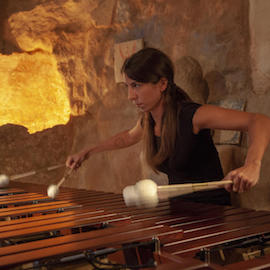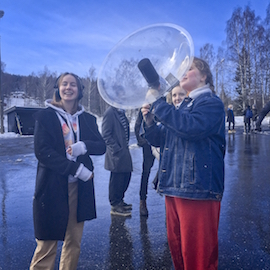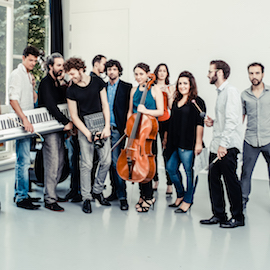ULYSSES Audience Research Blog #2 – EPCC/Estonian Music Days, Tallinn (EE)
04/2017 EPCC - EE
My second ULYSSES Audience Research stop took me to Tallinn, Estonia at the beginning of April. I collaborated there with the most recent addition to the ULYSSES Network, the Estonian Philharmonic Chamber Choir (EPCC), conducting a survey at their performance at this year’s Estonian Music Days, an annual festival for contemporary music. The EPCC and the Estonian Music Days are both established components of Tallinn’s classical music scene. Founded in 1979 and organised by the Estonian Composer’s Union, the festival showcases contemporary Estonian music, packing in as many premieres into one week as possible. Alongside the main festival, which includes concerts in various experimental formats, there is also the ‘mini-EMD’, a contemporary classical music festival put on entirely by young people. The EPCC, formed in 1981, is one of Estonia’s foremost classical music ensembles and makes regular appearances at the Estonian Music Days.
The Audience Research questionnaire was distributed at the EPCC’s concert on 08.04.17, which took place in the unique setting of the Niguliste Museum, a former church turned into an exhibition space and concert venue in 1984. The concert programme mixed contemporary works with pieces from the modern choral music canon; Ligeti’s Lux Aeterna and Sciarrino’s Responsorio delle tenebre were heard alongside recent works by Estonian composers. This mixed programme seemed accordingly to draw a relatively mixed public; it appears from a first glance at the data that the audience in Tallinn was mostly made up of amateur musicians or non-musicians, with far fewer professionals than at the previous survey in Graz. As for the overall response rate, this was lower than in Graz (around 30%), the lack of an interval at the concert may have been the main reason for this.
The reactions to the music were overwhelmingly positive (‘enjoyable’ and ‘engaging’ were very frequently selected in response to the music rating questions), which could point overall to the relative accessibility of contemporary choral music. Given the immediacy of the human voice and the help that texts can provide in interpreting a piece, it’s conceivable that new works for choir or voice in general might be received more favourably than instrumental works. It will be interesting to see whether actual trends in reception do emerge as I collect more data at different events with contrasting genres and styles of contemporary classical music.
Highlights: Estonian Music Days 2017
- The organisers of the Estonian Music Days certainly know how to keep audiences engaged with alternative and adventurous concert formats. Aside from the premiere of Peeter Vähi’s riotous ‘An April Night’s Dream’ which took place on the roof of the Estonian National Opera House (and featured raucous percussion and a smoke machine), a definite personal highlight was the ‘Obscure Avenues’ concert. Given no more details beyond a meeting place and time, we were invited to take a seat on a bus and requested to put on blindfolds, which were to be kept on for the duration of the event. After a short drive in silence, we were lead inside individually, where we heard two performances, one electronic and one acoustic. However, without visual reference points, any normal sense of ‘the performance’ was lost; there was just sound, and then there wasn’t. This put me into an especially heightened state of concentration for what I later found out was Helena Tulve’s Heart of the Earth (2017), a new work for piano and ensemble (the acoustic piece). In the state of blindness, the entry of each new instrument felt exhilarating; the light, brushy string tremolos and the crisp piano interjections sounding rich and intense. An unforgettable concert experience (and exercise in trust!) that made me realise just how much my attention is usually compromised when I’m at live events (see Marina Abramović’s artistic response to this issue) and how much can be gained from (enforced) concentration, particularly when hearing new works.
- As much as I did enjoy the EPCC’s stunning performance of Ligeti’s Lux Aeterna at the survey concert, it was really Mirjam Tally’s 2015 work, ‘The Land of Tree Worshippers’ that stole the show for me. The choir processed in from backstage whirling corrugaphones, the whistling calls of which meshed eerily with humming, rustling electronic sounds. Isolated vocal slides were at times juxtaposed by sudden dense passages for the full choir, making for an immersive piece with an impressive sense of textural depth and variation.
Gina Emerson




